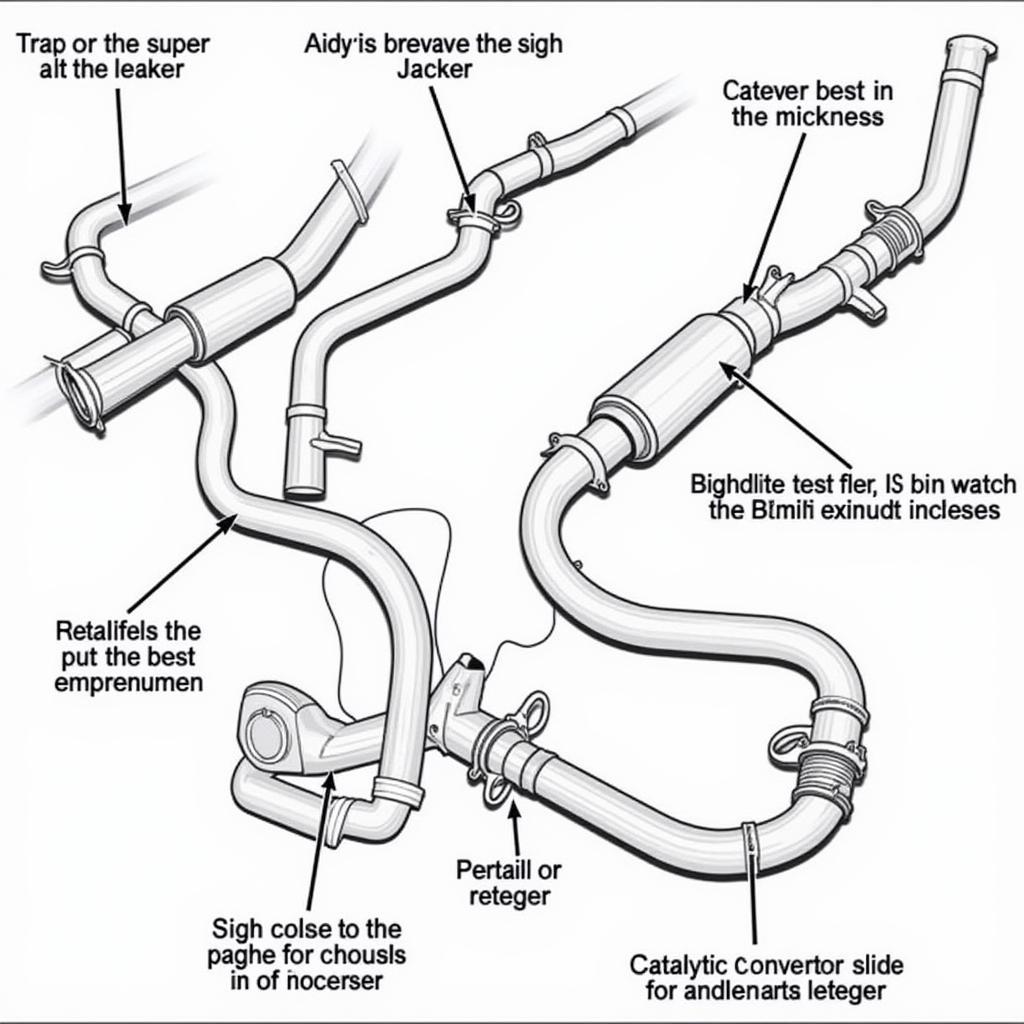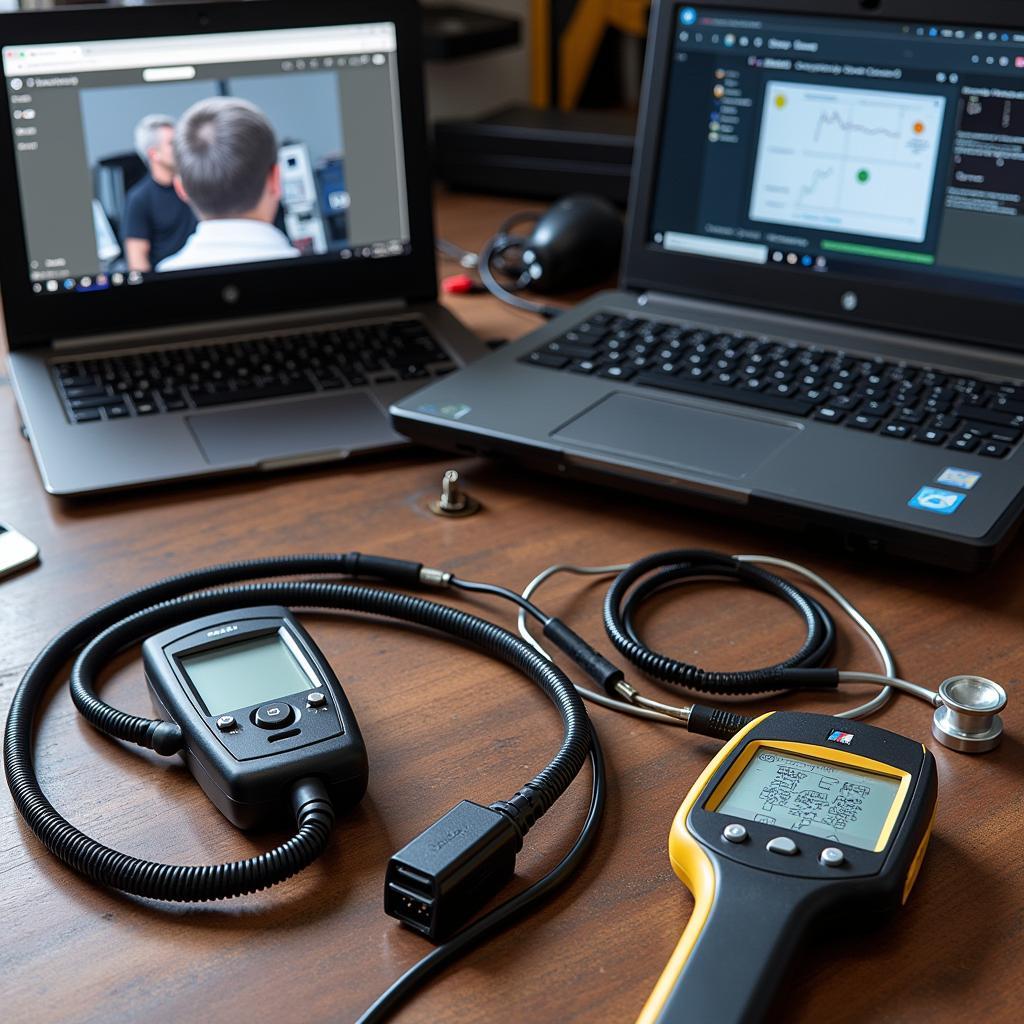The iconic growl of a 2006 BMW M3 is a symphony to car enthusiasts, but what happens when that familiar sound changes? This article delves into the intricacies of the 2006 BMW M3 sound, exploring common issues, diagnostic techniques, and solutions to keep your M3 roaring as it should.
The distinct sound of the 2006 BMW M3 is attributed to its naturally aspirated S54 engine. This high-revving masterpiece delivers a unique acoustic signature, a blend of mechanical precision and raw power. However, age, wear and tear, and modifications can impact this signature sound, sometimes for the worse. Recognizing these changes is crucial for maintaining the health and performance of your M3.
Understanding Your 2006 BMW M3’s Engine Note
The S54 engine is known for its high-pitched, metallic wail at higher RPMs. At lower RPMs, the sound is deeper and more subdued. Any deviation from this characteristic sound profile could indicate a potential issue.
Common 2006 BMW M3 Sound Issues
- Exhaust Leaks: A common culprit behind unwanted noises, exhaust leaks can manifest as hissing, popping, or rumbling sounds. These leaks can occur anywhere along the exhaust system, from the manifolds to the muffler.
- VANOS System Malfunction: The Variable Nockenwellen Steuerung (VANOS) system adjusts the camshaft timing for optimal performance. A malfunctioning VANOS system can lead to a rattling noise, particularly at idle or low RPMs.
- Rod Bearing Issues: A more serious problem, rod bearing wear can result in a knocking or ticking sound, especially under load. This requires immediate attention to prevent catastrophic engine damage.
- Throttle Position Sensor (TPS) Problems: A faulty TPS can affect the engine’s air-fuel mixture, leading to rough idling, hesitation, and unusual engine noises.
 2006 BMW M3 Exhaust System Diagram
2006 BMW M3 Exhaust System Diagram
Diagnosing 2006 BMW M3 Sound Problems
Diagnosing sound issues requires a systematic approach. Start by listening carefully to the nature of the unusual sound. When does it occur? Under what conditions? Does it change with RPM or engine load?
Tools and Techniques for 2006 BMW M3 Sound Diagnosis
- Visual Inspection: Begin with a thorough visual inspection of the engine bay and exhaust system. Look for signs of leaks, damage, or loose components.
- OBD-II Scanner: An OBD-II scanner can retrieve diagnostic trouble codes (DTCs) that can pinpoint specific issues.
- Stethoscope: A mechanic’s stethoscope can help isolate the source of unusual noises.
- Software Diagnostics: Advanced software diagnostic tools can provide real-time data on engine performance and identify potential problems. You might want to check out resources like our guide on the 2010 bmw bluetooth audio for related insights into BMW’s electronic systems.
 Inspecting the BMW M3 Engine Bay for Sound Issues
Inspecting the BMW M3 Engine Bay for Sound Issues
What if my 2006 BMW M3 has a rattling sound?
A rattling sound could indicate a VANOS system malfunction or loose components.
What does a knocking sound in my 2006 BMW M3 mean?
A knocking sound can indicate a serious issue like rod bearing wear, requiring immediate attention.
Why is my 2006 BMW M3 making a hissing sound?
A hissing sound often points to an exhaust leak.
Upgrading your audio system can sometimes mask underlying mechanical issues. While a good sound system enhances the driving experience, ensure you address any mechanical noises before investing in upgrades. Consider exploring options like the bmw e90 base audio upgrade for a better audio experience. Furthermore, understanding the harman kardon audio system bmw can provide valuable context.
“Regular maintenance is key to preserving the iconic sound of your M3,” says Alex Schmidt, a seasoned BMW technician. “Addressing issues early can prevent costly repairs down the line.”
 Diagnostic Tools for BMW M3 Sound Analysis
Diagnostic Tools for BMW M3 Sound Analysis
Maintaining the 2006 BMW M3 Sound
Regular maintenance is vital for preserving the distinctive 2006 BMW M3 sound. Regular oil changes, using the correct oil viscosity, are crucial for engine health and can prevent many sound-related issues. If you’re aiming for a specific sound profile, understanding the nuances of the bmw m3 gtr engine sound might be helpful. Also, exploring the bmw individual audio system m3 can provide valuable insights into audio customization.
“Ignoring unusual sounds can lead to significant and expensive repairs,” warns Maria Sanchez, an automotive engineer specializing in BMW performance vehicles. “Early diagnosis is crucial for preventing further damage.”
In conclusion, the 2006 BMW M3 sound is a testament to its engineering prowess. Maintaining this iconic sound requires vigilance and proactive maintenance. By understanding the common sound issues, employing proper diagnostic techniques, and adhering to a regular maintenance schedule, you can ensure your M3 continues to roar for years to come.
FAQ:
- What is the most common cause of unusual sounds in a 2006 BMW M3? Exhaust leaks and VANOS system malfunctions are common culprits.
- How often should I change the oil in my 2006 BMW M3? Follow the manufacturer’s recommended oil change intervals.
- Can aftermarket exhaust systems affect the sound of my 2006 BMW M3? Yes, aftermarket exhausts can significantly alter the sound.
- What should I do if I hear a knocking sound coming from my engine? Immediately take your car to a qualified mechanic.
- How can I diagnose a VANOS system malfunction? A diagnostic scanner and a mechanic’s stethoscope can help pinpoint VANOS issues.
- Is it normal for the 2006 BMW M3 to make a slight ticking sound? Some ticking is normal, but excessive or unusual ticking should be investigated.
- Can I perform diagnostic tests on my 2006 BMW M3 myself? While some basic checks can be done, more advanced diagnostics require specialized tools and expertise.
Need help with your 2006 BMW M3 sound? Contact us via Whatsapp: +1 (641) 206-8880, Email: CARDIAGTECH[email protected] or visit us at 276 Reock St, City of Orange, NJ 07050, United States. We offer 24/7 customer support.
